11 Fall Street Foods Around the World Worth the Trip
As the air turns crisp and leaves start to fall, some of the best flavors of the season come from street vendors around the world. From warm roasted chestnuts to sweet festival breads, these seasonal favorites bring comfort and tradition to cool autumn days. Here are a variety of fall street foods worth traveling for, each offering a taste of local culture and the season’s bounty.
This post may contain affiliate links, which helps keep this content free. Please read our disclosure for more info.
Roasted Chestnuts
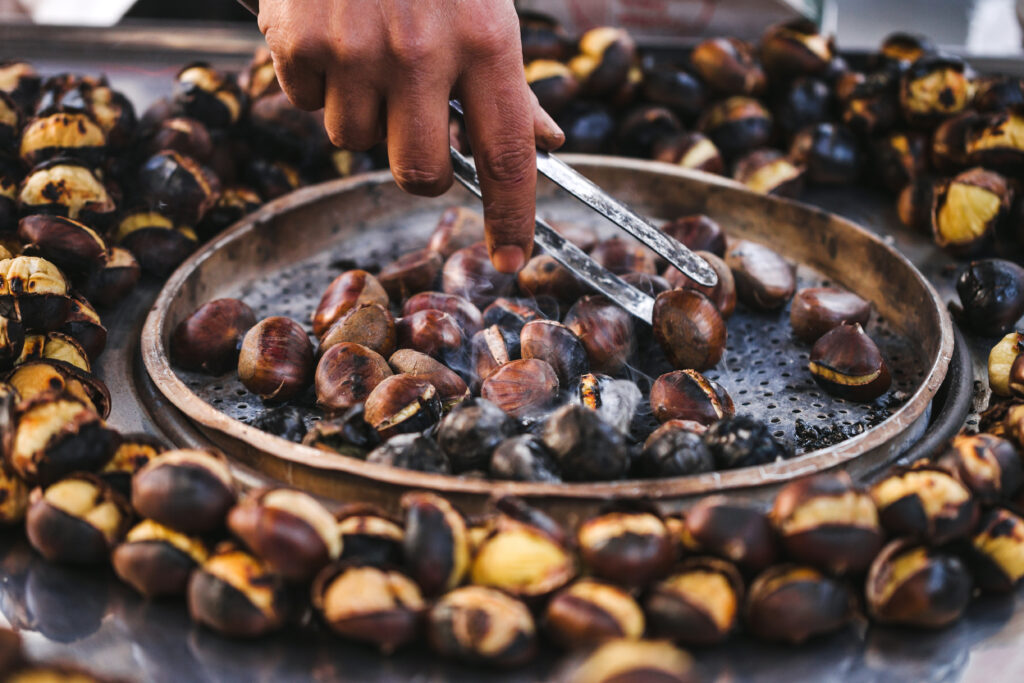
Few foods capture the feeling of autumn quite like roasted chestnuts. Street vendors set up large drums or braziers, filling the air with a smoky, nutty scent that draws people in from blocks away. The shells crack open easily once roasted, revealing tender, slightly sweet nuts that taste best eaten piping hot on a cool evening. In many cities across Europe and Asia, this snack is a signal that fall has truly arrived.
The appeal lies in both taste and tradition. Chestnuts have been sold on streets for centuries, becoming part of seasonal rituals in places like Paris, Lisbon, Seoul, and Beijing. Wrapped in a paper cone, they warm your hands while you stroll, offering simple comfort after the harvest season. Their popularity shows how one humble nut can connect cultures across continents through a shared love of autumn flavors.
Roasted Sweet Potatoes
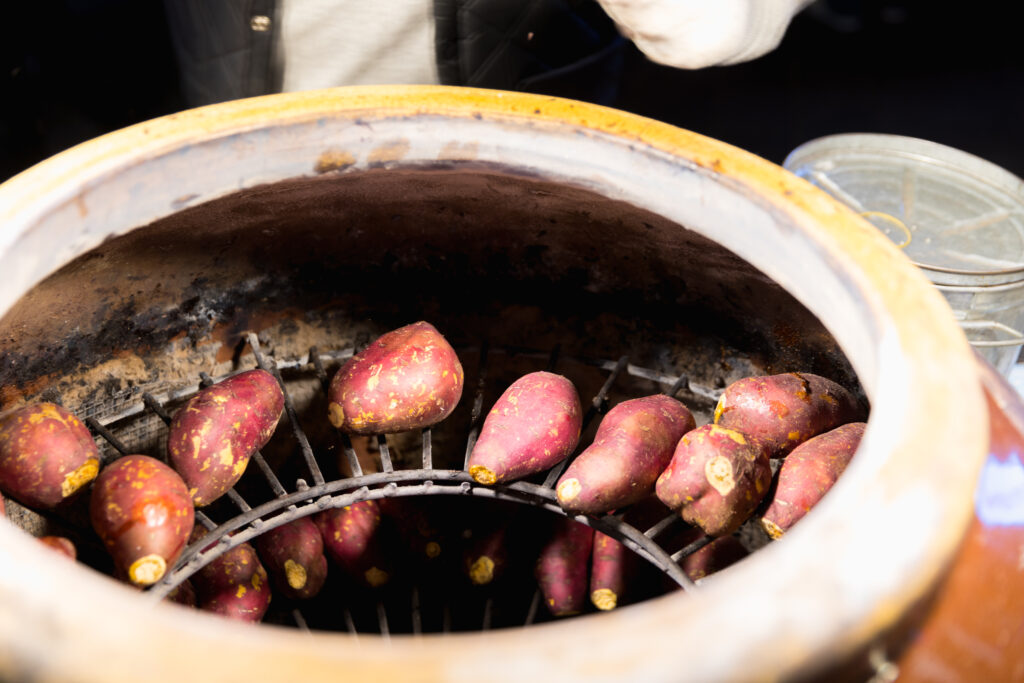
Roasted sweet potatoes are a hallmark of chilly evenings in East Asia. Vendors often keep them in heated stone ovens or metal drums, slowly baking them until the inside turns caramelized and creamy. The skin peels back easily, releasing a steam that carries hints of earthiness and sugar. On busy city streets, the sight of a cart selling these golden snacks often signals the shift to cooler months.
Their appeal goes beyond convenience. Sweet potatoes are considered nourishing and filling, making them a staple snack for students, workers, and families. In Japan and Korea, the sound of vendors calling out for buyers is a nostalgic reminder of childhood. With their naturally sweet flavor and warming qualities, roasted sweet potatoes remain one of the most beloved street foods of autumn.
Hodu-gwaja (Walnut Pastry)

Hodu-gwaja, or walnut pastries, are a Korean treat filled with red bean paste and chunks of walnut. Baked fresh in small walnut-shaped molds, they come out golden brown and fragrant. The crisp outer shell contrasts beautifully with the soft, nutty filling, creating a satisfying bite every time. They are often sold near bus stations and markets, making them a favorite snack for travelers.
This pastry is closely tied to the fall season when walnuts are harvested. Its warmth and sweetness provide comfort against the chill of early evenings. Many Koreans associate hodu-gwaja with autumn festivals or family road trips, where a paper bag full of the little cakes is quickly shared. The combination of tradition and taste has made it a seasonal staple that continues to delight locals and visitors alike.
Tamales
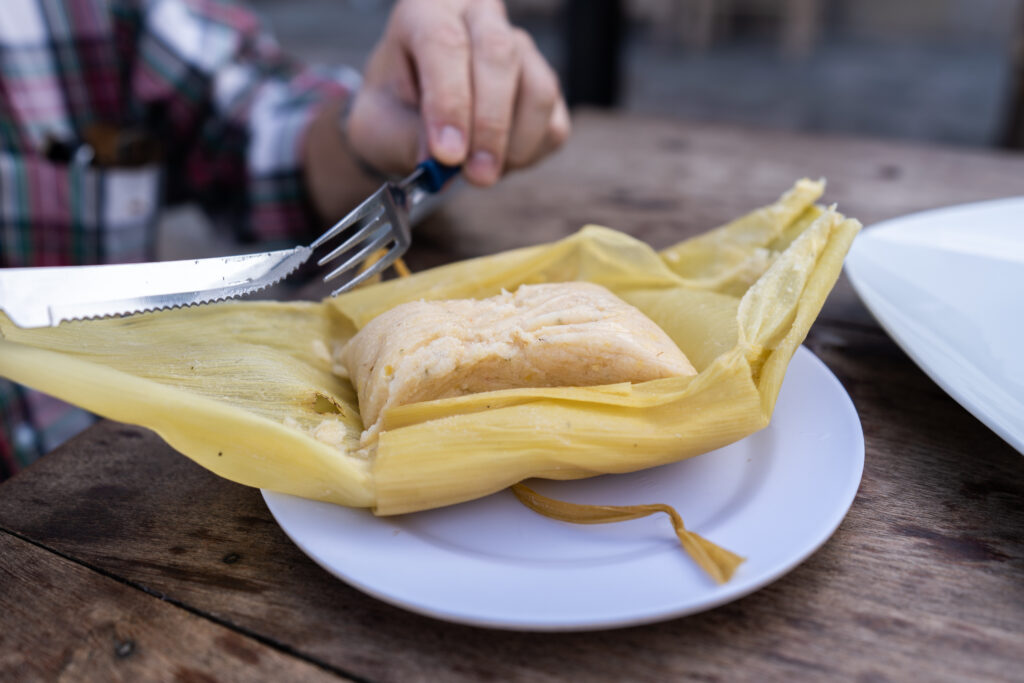
Tamales hold a special place in Mexican street food culture, especially during the autumn festival season. Wrapped in corn husks and steamed until tender, they come stuffed with meats, chilies, beans, or vegetables. On cool October nights, tamale vendors often line busy plazas, their steam rising into the crisp air. Eating one is both a filling meal and a cultural experience.
During Día de los Muertos, tamales take on even greater meaning. Families gather to prepare and share them as offerings for loved ones, while street stalls serve them with hot atole drinks. Their variety is endless, from savory red chile pork to sweet versions with raisins or pineapple. In fall, tamales become more than food—they are a seasonal symbol of remembrance and togetherness.
Pan de Muerto
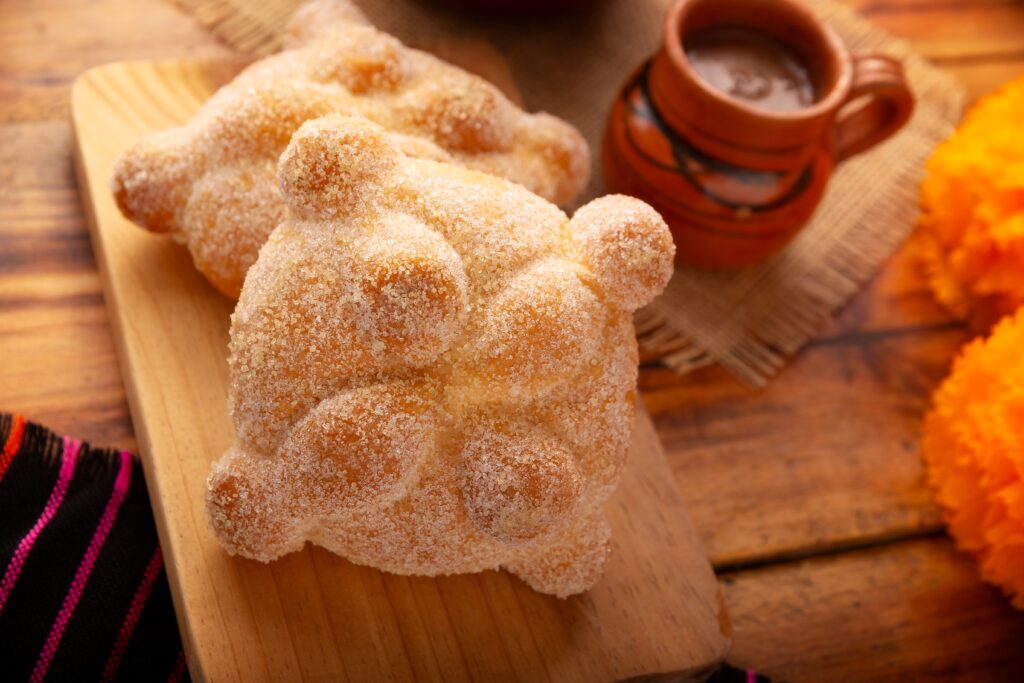
Pan de Muerto, or “bread of the dead,” is baked only in late October and early November. The soft, airy bread is lightly flavored with orange blossom water and sprinkled with sugar. Its shape is symbolic, often topped with dough pieces meant to resemble bones. Sold in markets and bakeries, it appears just in time for Día de los Muertos celebrations.
While families often buy loaves to place on home altars, many enjoy it right away with hot chocolate on chilly nights. Vendors set up stands outside cemeteries and plazas, offering the bread to passersby honoring their loved ones. Because it is only available during this short season, the bread feels especially treasured. Eating it in the cool evenings of fall ties visitors directly into Mexico’s most meaningful traditions.
Pozole
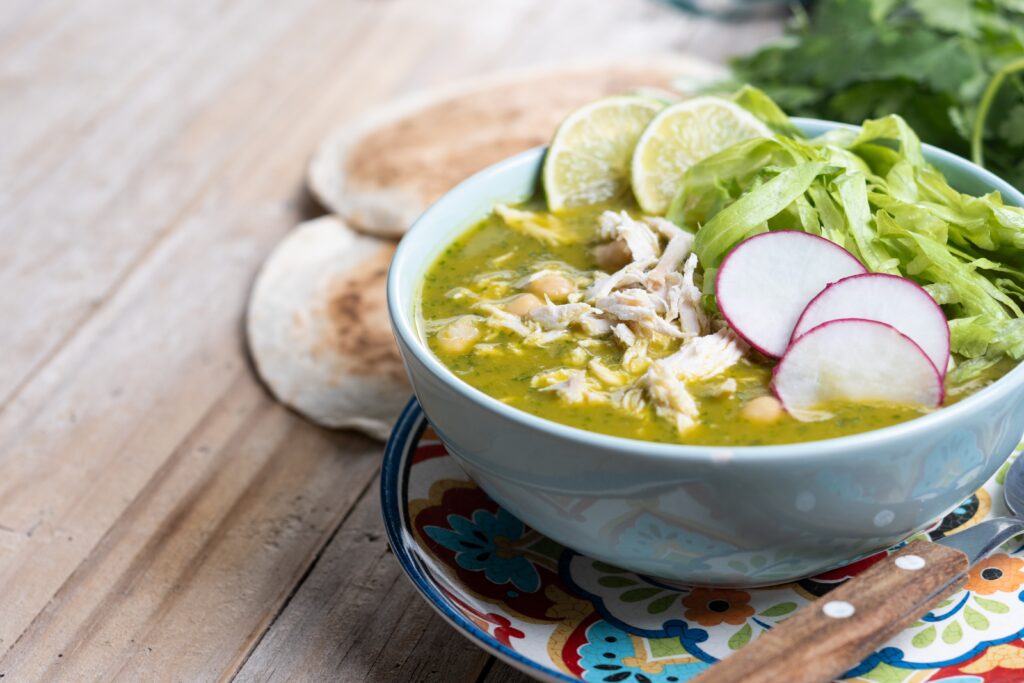
Pozole is a hearty Mexican soup made with hominy, pork, and red chile broth. It is sold by street vendors in big pots, ladled into bowls and topped with cabbage, radish, onion, and lime. On a brisk evening, the rich flavors and spicy warmth make it one of the most comforting meals you can buy outdoors. Its balance of textures and heat reflects the season perfectly.
Traditionally, pozole has been linked to festivals and gatherings, and fall is when it shines brightest. It is especially popular around Día de los Muertos, where a steaming bowl feels just right after visiting altars and cemeteries. Street stalls serving pozole late at night bring families and friends together around shared tables. Its deep flavors reflect the richness of Mexican culinary tradition and the comfort of fall food.
Sopa Azteca (Tortilla Soup)
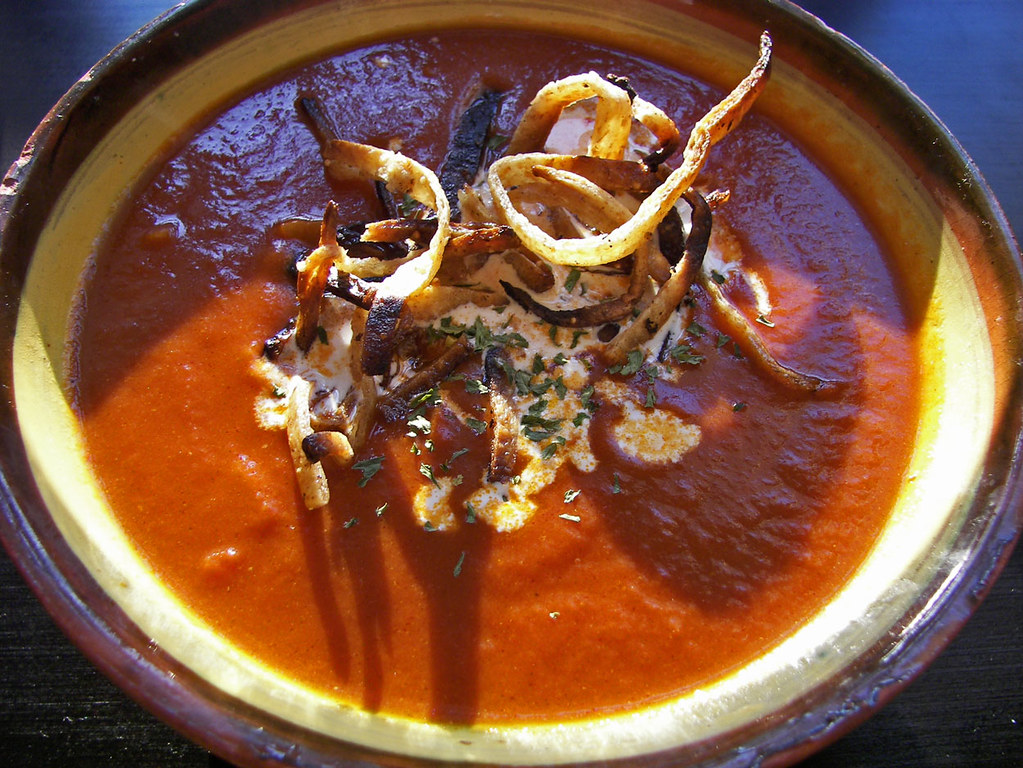
Sopa Azteca, also known as tortilla soup, combines a light broth with crisp tortilla strips, avocado, cheese, and chile. The dish is both simple and full of character, and street vendors often serve it steaming hot. A squeeze of lime and a touch of crema make it a balanced blend of spice and creaminess. It’s a favorite choice when evenings grow cooler.
The soup’s appeal lies in its balance of warmth and freshness. While hearty, it still feels light enough to enjoy outdoors in a bustling plaza. During fall festivals, vendors prepare large batches to serve late into the night. With its comforting flavors, tortilla soup has become a symbol of seasonal eating in Mexico’s vibrant street food scene.
Mexican Street Corn (Elote and Esquites)

Elote, grilled corn on the cob slathered with mayonnaise, cheese, chili powder, and lime, is one of Mexico’s most famous street foods. Its autumn connection comes from the harvest season, when corn is at its peak. Vendors roast the cobs over open flames, creating a smoky char that pairs perfectly with the tangy toppings. The result is a messy but irresistible fall snack.
Esquites, a variation served in cups, offers the same flavors in spoonfuls rather than bites off the cob. Both forms are especially popular at seasonal fairs and markets. Families stroll through plazas holding warm cups or sticks of elote as the weather turns cooler. For visitors, trying this dish in autumn is a flavorful introduction to Mexican street culture.
Buñuelos
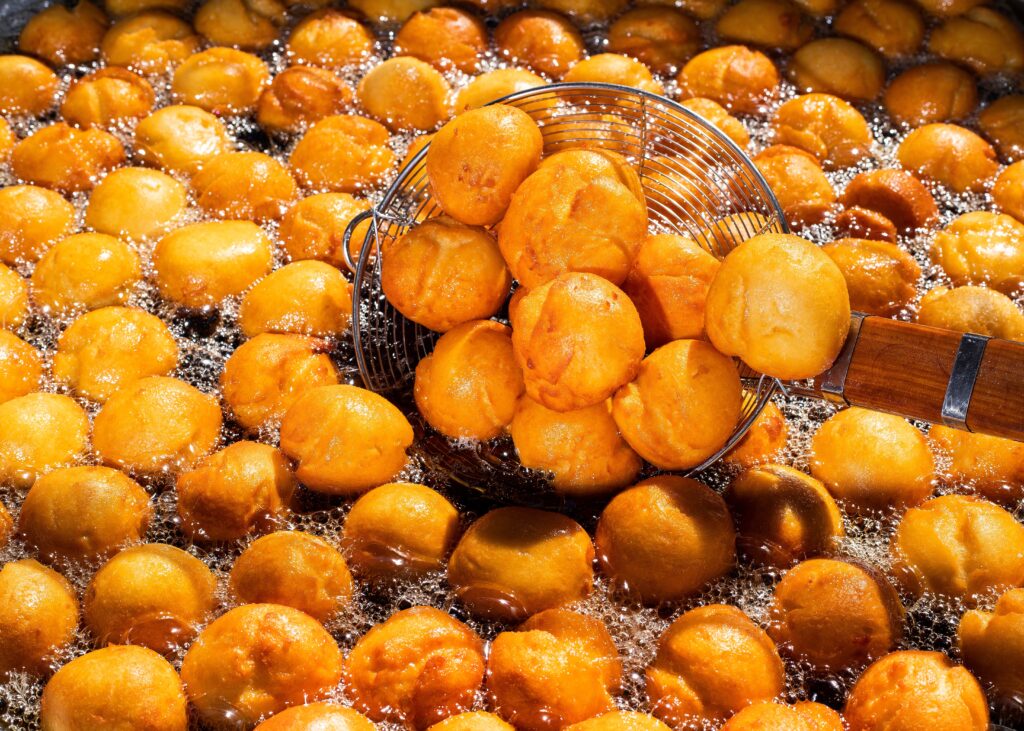
Buñuelos are fried dough balls or disks, often sprinkled with sugar or drizzled with syrup. Across Spain and Latin America, they appear on streets during festivals and cooler months. Their crisp exterior and soft interior make them addictive, especially when eaten fresh out of the fryer. In fall, their sweetness pairs beautifully with hot drinks.
The treat has different versions depending on the country. In Mexico, they are large, flat disks dusted with cinnamon sugar, while in Colombia, they are small golden spheres. Regardless of form, buñuelos are tied to gatherings, religious holidays, and street fairs. Eating one warm on a chilly evening is a memory that lingers long after.
Sopaipillas
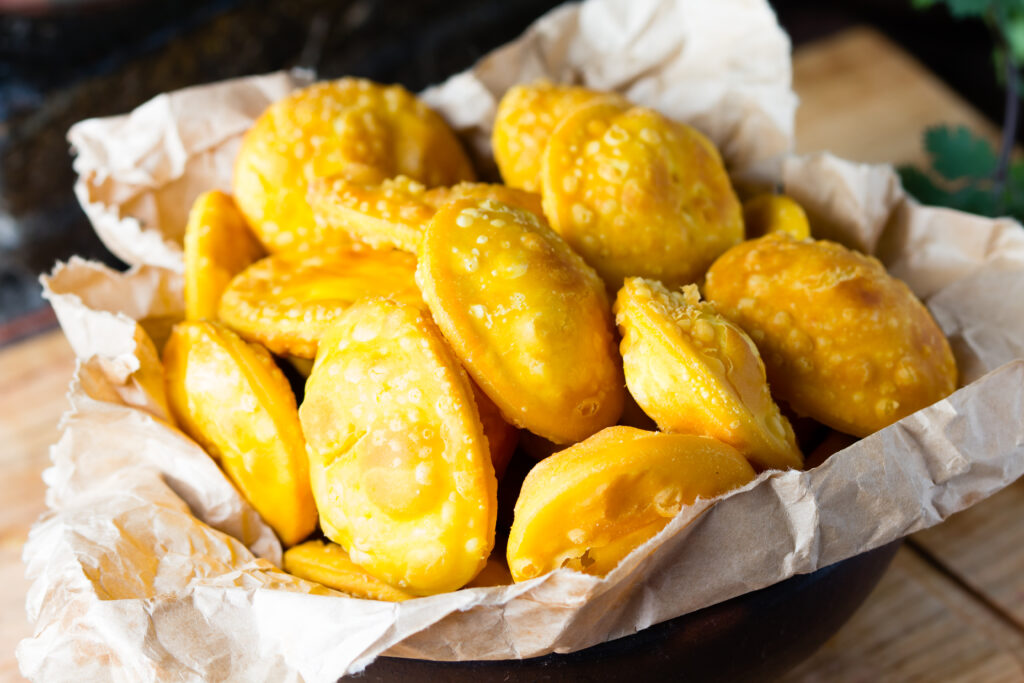
Sopaipillas, fried pastries often served with honey or syrup, are especially comforting in fall. In Chile, they’re made from pumpkin dough, giving them a seasonal touch. Vendors fry them fresh during cool, rainy days, and people line up for a warm, sweet bite. The crisp outside and soft center create a satisfying contrast.
Street food culture keeps sopaipillas connected to daily life. Families buy them after work, while children enjoy them as afternoon snacks. In parts of the United States, they are paired with savory fillings, showing their versatility. Wherever they’re found, sopaipillas are a reminder that simple fried dough can be the highlight of an autumn afternoon.
Pumpkin-Coconut Custard (Sangkhaya Fak Thong)
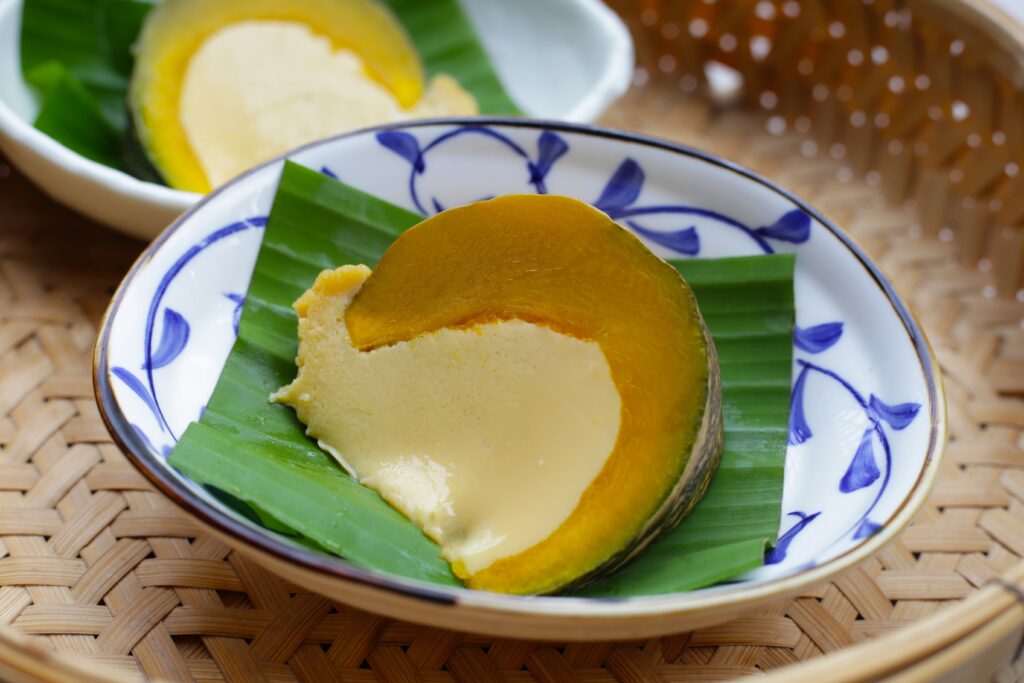
Pumpkin-coconut custard is a Southeast Asian dessert that looks as striking as it tastes. A whole pumpkin is hollowed out and filled with a rich coconut custard, then steamed until tender. Vendors slice it into wedges, revealing the smooth filling against the bright orange flesh. Sweet, creamy, and lightly spiced, it feels perfect for autumn.
Markets in Thailand, Cambodia, and Laos feature this dessert in the fall, when pumpkin is plentiful. The custard is both rich and comforting without being heavy. Its presentation alone draws crowds, as few can resist the sight of a pumpkin doubling as a dessert bowl. For travelers, it offers a taste of seasonal ingredients turned into something beautiful and satisfying.
This article originally appeared on Avocadu.
